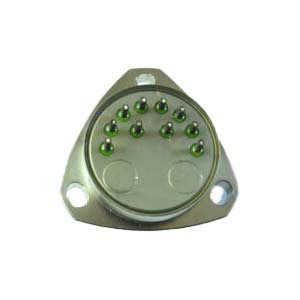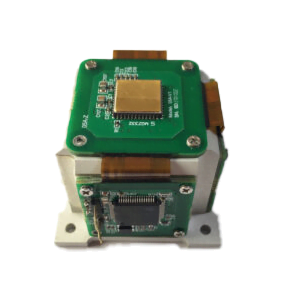The principle of magnetoresistive sensor is a common sensor technology that uses the magnetoresistive effect to measure the strength of a magnetic field. Magnetoresistive sensors can be used to measure the direction, size and position of magnetic fields, and are widely used in industrial, medical, aerospace and other fields.The working principle of magnetoresistive sensors can be divided into two types: linear magnetoresistive sensors and angular magnetoresistive sensors. Linear reluctance sensors are used to measure the magnitude and direction of a magnetic field, and they typically consist of a magnetically sensitive material and two electrodes. When a magnetic field is applied to a magnetically sensitive material, the resistance value changes, and this change can be determined by measuring the voltage between the electrodes to determine the strength of the magnetic field.
The magnetoresistance effect sensor is made based on the magnetoresistance effect of the magnetic material. A magnetic material (such as permalloy) has an anisotropy, and when it is magnetized, its magnetization direction will depend on the axis of easy magnetization of the material, the shape of the material, and the direction of the magnetizing magnetic field. As shown, when the current is given to the banded permalloy material, the electrical resistance of the material depends on the angle between the direction of the current and the direction of magnetization. If a magnetic field B (the measured magnetic field) is applied to the material, the original magnetization direction is rotated. If the direction of magnetization turns in a direction perpendicular to the current, the resistance of the material will decrease; if the direction of magnetization turns parallel to the direction of the current, the resistance of the material will increase. Magnetoresistive effect sensors typically have four such resistors and connect them into a bridge. Under the action of the measured magnetic field B, the resistance values of the two resistors located at the relative positions in the bridge increase, and the resistance values of the other two resistors decrease. In its linear range, the output voltage of the bridge is proportional to the measured magnetic field. Magnetoresistive sensors have been fabricated on silicon wafers to form products. Its sensitivity and linearity have been able to meet the requirements of the magnetic compass, and the performance in all aspects is significantly better than that of the Hall device. Hysteresis error and zero temperature drift can also be eliminated by alternating forward and reverse magnetization of the sensor. Due to these superior properties of magnetoresistive sensors, it is able to compete with fluxgates in certain applications. The main problem with magnetoresistive sensors is their flipping effect, which is inherent in their principle.
Types
According to the different types of magnetoresistive effect, magnetoresistive effect sensors can also be divided into installed magnetoresistance, Hall components, magnetoelectric induction components, GMR and TMR components. Among them, the magnetoresistance sensor can be divided into magnetoelectric resistance and magnetoelectric capacitor two kinds.
Application
Magnetoresistive sensors are widely used in the field of modern industrial control. For example, in an automatic control system, position, speed and direction can be detected by measuring the locking magnetic field. In addition, in magnetic memory and magneto-optical memory, magnetoresistive sensors also play an important role.
Characteristic
Magnetoresistive effect sensor has the characteristics of high sensitivity, fast response, high precision and good reliability. Because the signal output current or voltage is proportional to the change of the magnetic field, the signal conditioning can be directly processed, which is conducive to the design and application of the control system.
Magnetoresistive effect sensor is a very important type of sensor, and its application in modern industrial control field is more and more extensive. It is believed that in the near future, with the continuous progress of technology, the application field of magnetoresistive effect sensors will be broader and their functions will be more powerful.
More Technical Questions
1.The Difference Between Gyroscope, Compass, IMU, MEMS
2.How to choose MEMS IMU
3.Differences between IMU, AHRS, VRU and INS
4.What is INS and How does it Work?
5.Analysis of Typical Applications of MEMS Sensors
6.What is MEMS Sensor and its Technical Advantages?
Products in Article
.jpg)





